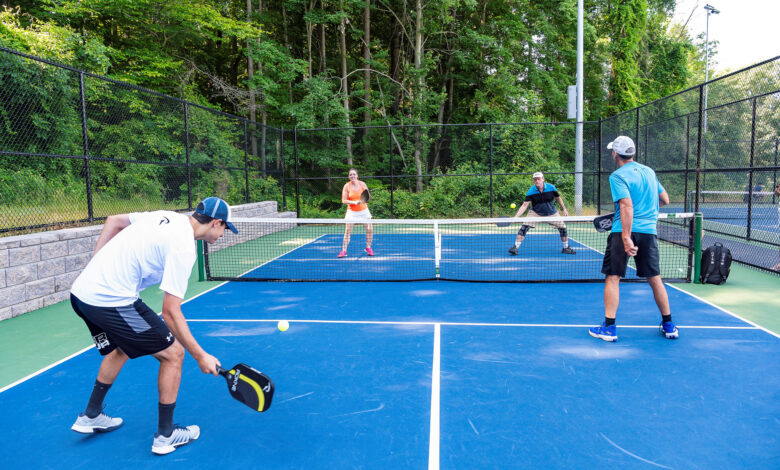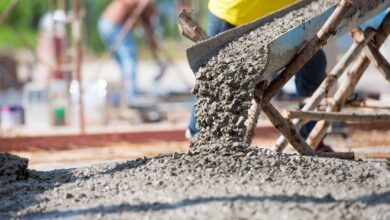How to Convert a Tennis Court to a Pickleball Court: A Comprehensive Guide

Pickleball has taken the sports world by storm in recent years, and many tennis enthusiasts are eager to convert their tennis courts into pickleball courts. This transformation allows tennis facilities to accommodate both sports, opening up new opportunities for players of all ages. In this comprehensive guide, we will explore the step-by-step process of converting a tennis court into a pickleball court, ensuring a smooth transition for your facility.
Understanding the Basics
Before diving into the conversion process, it’s essential to grasp the key differences between tennis and pickleball courts:
Court Size:
- A standard tennis court measures 78 feet in length and 27 feet in width for singles play, and 36 feet in width for doubles play.
- A pickleball court is considerably smaller, measuring 20 feet by 44 feet, which is just under half the size of a tennis court.
Net Height:
- Tennis nets are set at a height of 3 feet at the center strap.
- Pickleball nets are set at 36 inches (3 feet) at the sides and 34 inches at the center.
Court Surface:
- Tennis courts typically have a hardcourt surface, often made of asphalt or concrete.
- Pickleball courts can also be hardcourt, but they may have a variety of surfaces, including asphalt, concrete, or even synthetic materials.
Steps to Convert a Tennis Court to a Pickleball Court
Converting a tennis court to a pickleball court involves a series of steps to ensure proper dimensions and markings. Here’s a comprehensive guide to get you started:
1. Assess Your Tennis Court
Begin by evaluating the condition of your tennis court. Ensure that the surface is in good shape and free of any significant cracks or damage. If the court requires resurfacing or repairs, address these issues first to create a suitable foundation for the pickleball court.
2. Determine Court Orientation
Pickleball courts can be oriented in two ways: parallel or perpendicular to the existing tennis court. The choice depends on the available space and personal preference. Consult with a professional or pickleball court designer to decide the best orientation for your facility.
3. Court Dimensions
Measure and mark the dimensions for the pickleball court on your tennis court surface. A standard pickleball court is 20 feet by 44 feet. Use chalk or paint to create the court outline, including the baseline, sidelines, and non-volley zone (kitchen) lines.
4. Net Installation
Install a pickleball net at the correct height, which is 36 inches (3 feet) at the sides and 34 inches at the center. Ensure that the net is taut and properly secured. Conversion nets designed for tennis courts are available and can simplify the process.
5. Create Non-Volley Zone
Mark the non-volley zone (often referred to as “the kitchen”) using paint or tape. This area is 7 feet from the net on both sides of the court. Players are not allowed to volley (hit the ball in the air) while standing in this zone, which helps maintain fair play.
6. Court Surface Color
Consider painting the pickleball court surface with a color that contrasts with the existing tennis court color. This makes it easier for players to distinguish between the two courts and reduces confusion.
7. Additional Markings
Depending on your preferences and available space, you can add additional markings, such as service boxes, centerlines, and baseline markings, to align with pickleball regulations. These markings enhance the court’s authenticity.
8. Install Court Accessories
Set up pickleball posts, which are positioned outside the court boundaries, to hold the net. You may also want to provide storage for pickleball equipment, such as paddles and balls, near the court.
Enjoying Your Pickleball Conversion
Once the conversion is complete, your tennis court is now a fully functional pickleball court. Players of all ages can enjoy the fast-paced, engaging sport of pickleball on a familiar surface. Here are a few tips for making the most of your newly converted court:
1. Organize Pickleball Events
Promote pickleball at your facility by organizing introductory sessions, tournaments, or leagues. Encourage players to participate and enjoy the sport.
2. Offer Rental Equipment
Consider providing rental pickleball equipment, including paddles and balls, for those who want to give the sport a try without committing to purchasing their gear.
3. Update Court Scheduling
Adjust your court scheduling system to accommodate both tennis and pickleball players. Allocate specific time slots for each sport to avoid conflicts.
4. Promote Inclusivity
Pickleball is known for its inclusivity and accessibility. Encourage players of all skill levels to join in the fun, fostering a welcoming and diverse pickleball community.
Conclusion
Converting a tennis court into a pickleball court can breathe new life into your sports facility, attracting players of all ages and skill levels. By following the steps outlined in this guide, you can ensure a smooth and successful conversion process. Embrace the growing popularity of pickleball and provide a versatile space where both tennis and pickleball enthusiasts can enjoy their favorite sports.



